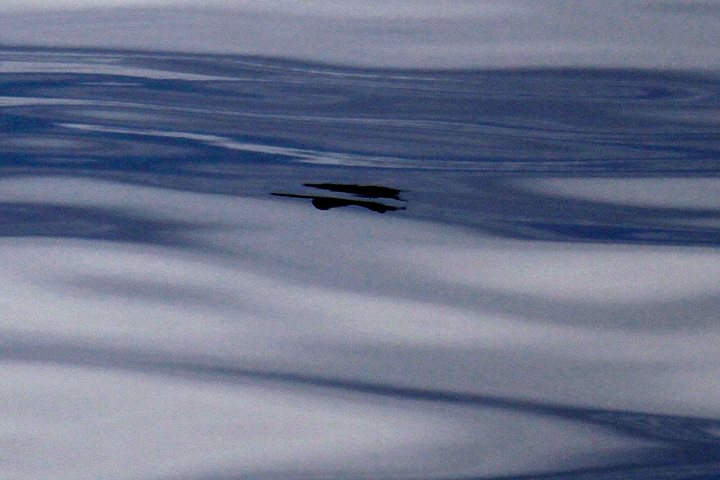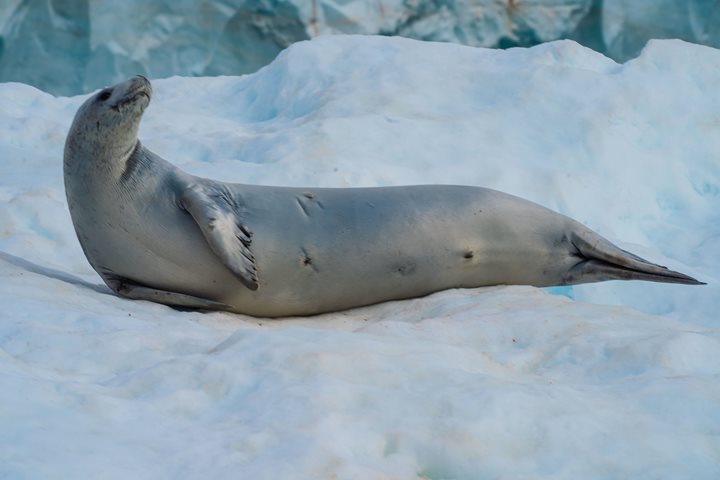The Drake Passage, once again, did not live up to its fearful reputation. In fact, the sea conditions continued to become calmer and calmer as we approached our first landfall in Antarctica. Unfortunately, the calm conditions brought with them fog, and the poor visibility made animal spotting very difficult for those on the bridge.
The morning was spent listening to the ‘do’s and don’ts’ of how to behave whilst ashore and in the Zodiacs. This was followed by decontamination and vacuuming of equipment. Finally, soon after lunch, we set off for shore.
The landing was on a stony beach, which lead up to a small rise, and over to another beach, covered with gentoo penguin nests and a few large elephant seals. On the higher ground, there were many very vocal chinstrap penguin, on their nests. It appeared that the birds were on eggs and no chicks of either species were seen. However, brown skuas constantly harried the rookeries, and the penguins had to keep vigilant in the protection of their eggs. Even so, on two occasions, the skuas got through the defences and made off with eggs.
There was a special moment at the landing site, when a king penguin came out of the water in front of us. This bird was a long way from home, the nearest king rookery being on the Falkland Islands, some 500 miles to the north.
Once all were back on the ship, we headed for the north of the peninsula, to ‘iceberg alley’. This is a place well known for its large, grounded icebergs, and today was no exception. The skies cleared and we were treated to spectacular views of huge tabular bergs that were once part of the B15 monster iceberg that broke off from the Ross Sea Ice Shelf 14 years ago.
We had a special New Year’s Eve meal, followed by a party in the lounge, which culminated in a countdown to midnight, when the ship’s bell was rung by the oldest guest, to see out the old year, and then rung again by the youngest guest to see in the new one.







